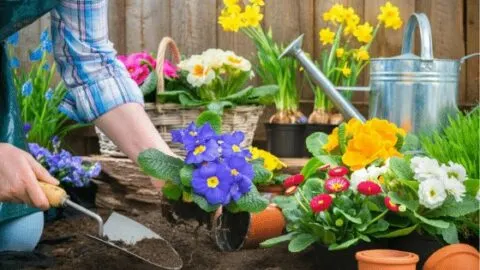Gardening is recognized as one of the most celebrated hobbies.
From planting flowers for a luscious lawn to cultivating organic vegetables such as broccoli for a special weekend dinner, it encompasses all.
However, deciding what to plant in the garden is nothing less than a discovery.
Great Garden Plants
The greatest garden plants are:
- Peonies – Perennial
- Coneflower – Perennial
- Daffodils – Perennial
- Tall Joe-Pye Weed – Suitable for a Rain Garden
- Rhododendrons- Suitable for a Rain Garden
- Blue Flag Iris – Suitable for a Rain Garden
- Hardy Hibiscus – Summer Blooming
- Shasta Daisy – Summer Blooming
- Leafy Begonias – Great Foliage Plants
- Purple Fountain Grass – Great Foliage Plants
- Coleus – Great Foliage Plants
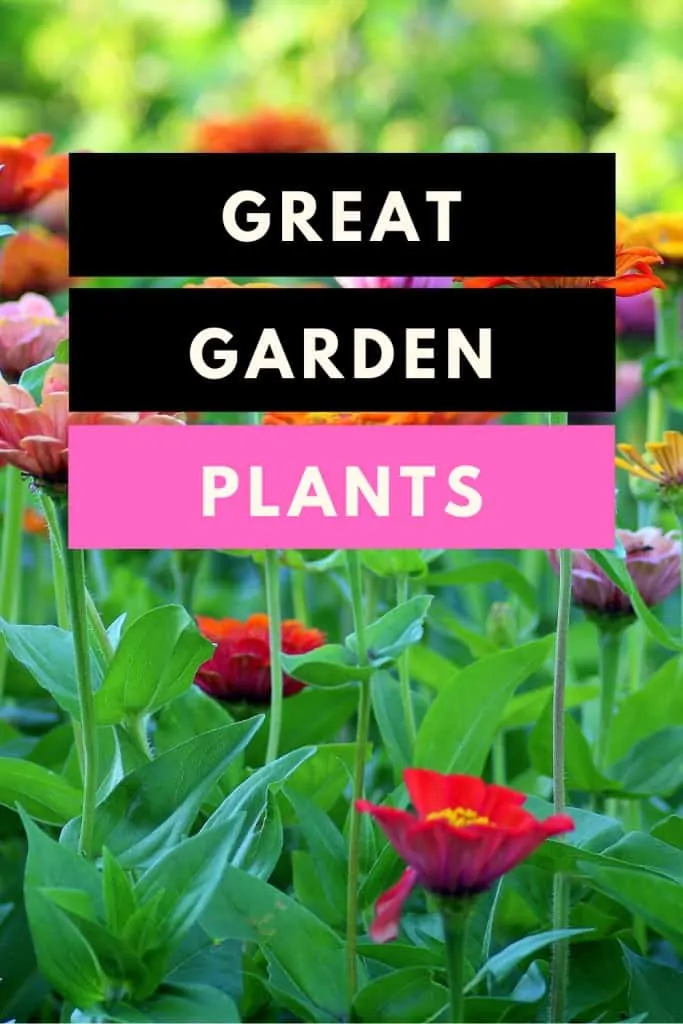
Great Garden Plants – Gardening Guide
Table of Contents
In this article about great garden plants, we will help you discover the sphere of great garden plants while equipping you with the right set of information on plant care.
Whether you are looking for shade-loving plants or plants that bloom all summer, our garden prescription is seeded with all.
To get you started with a great garden, we have categorized the list of great garden plants into five major categories,
- Perennial Planting
- Magical Plants for a Rain Garden
- Summer Blooming Plants
- Great Foliage Plants
- Butterfly Blooming Plants
Let’s explore each category and guide you through designing a garden.
1. Perennial Planting
A perennial flower garden design will continue to remain evergreen as perennials come back every year.
Thus, the bonus to a perennial flower garden is that it requires no replanting. All you have to do is, make a careful selection of plants you want in the garden.
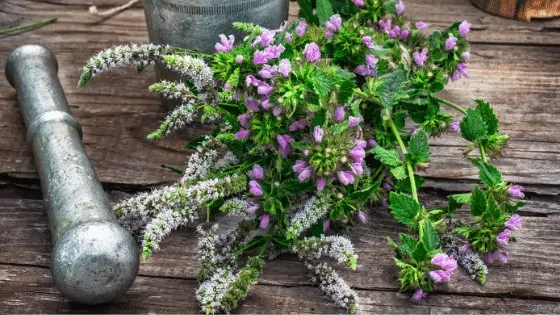
Great Garden Plants – Perennial Garden
The reason is that some plants are good at maintaining their foliage throughout winters, but some varieties go dormant and shoot up the next spring.
So, when pairing perennial plants, you have to make a smart choice and choose great garden plants that not only give a scenic view in terms of color, form, and texture but also bloom throughout the year.
Some of the most vibrant perennial plant selections include,
Peonies – Peony plants are great garden plants that produce fluffy yet fragrant flowers that, too, in a variety of colors and forms.
Their popularity as a garden-worthy plant has grown over the years due to the very same reason.
Their fragrance varies from light scents to slightly strong citrusy scents.
For a healthy blooming in spring, it is recommended that you plant bare-root peonies in the fall before the first frost date.
Coneflower – Coneflowers are acknowledged as one of the absolute best when it comes to planting perennials. The pretty daisy-like form of cornflowers makes them a garden staple.
They easily tolerate dry soil and conveniently grow in almost under any climatic conditions.
While purple is the most popular amongst all coneflower colors, there are also other shades ranging from sweet whites to vibrant orange, red and yellow.
Daffodils – These charmingly yellow flowers are the beauty of perennial planting, and thus no perennial list is complete without daffodils. They make fantastic great garden plants
Plant the daffodil bulbs in fall, and they’ll be the first flowers to bloom in early spring, painting your garden with vibrant colors for springs to come.
Daffodils grow best in sites with full sun exposure, so it is suggested that when choosing a planting site, be sure to go for one that receives an adequate amount of sunlight.
For further details about other popular types of perennials, you can check out the 8 Popular Perennials by DIY Network.
HOW TO TAKE CARE OF PERENNIALS?
Perennial plants come back year after year, bringing a cheerful color palette of blooming flowers to your garden.
Therefore, it is important that you play your part and follow the necessary care tips to help them blossom well.
Here are some basic perennial care tips to follow,
Watering is an essential part of caring for great garden plants. Water deeply during the first growing season so that perennials bloom well in all the seasons to follow.
If you are planting in the fall, then water perennials regularly until the first frost. Secondly, use soil that is not excessively dry or overly wet.
Also, make use of low-nitrogen fertilizers and practice mulching to prevent weeds’ growth and facilitate moisture retention.
It is also important that you create a straight clean edge between the lawn and flower bed.
Plant supports are also an integral part of perennial plant care. It is recommended that you install plant supports earlier in the season, so that plant roots remain undisturbed during the growth period.
Make sure to place the supports close to the plant and then be gentle when tying it to the stem.
Hoops can be used to support clump-forming plants like peonies.
Let’s now look into great garden plants for rain gardens.
2. Magical Plants for a Rain Garden
A rain garden is a depressed region formed from collecting runoff water.
These gardens are designed to facilitate temporary storage and soaking of rainwater that flows from driveways, sloped surfaces, and rooftops.
Rain gardens are considered to be more efficient than conventional gardens when it comes to soaking water.
Planting native grass, perennials, and shrubs makes these rain gardens cost-effective by naturally reducing the filtered runoff from your property.
Rain gardens accommodate plants of all types and sizes that help soak the stormwater, some of the great garden plants for rain gardens are,
Tall Joe-Pye Weed – Tall plants act as filters. They suck up water, filter out pollutants and prevent silt from settling in ponds.
Joe-Pye Weed is 3-5 feet tall and, at times, grows up to 8 feet, adding a stunning structure to your garden.
It grows best in a rich soil that is perfectly moist, but at times it also manages to survive in slightly drier soil conditions.
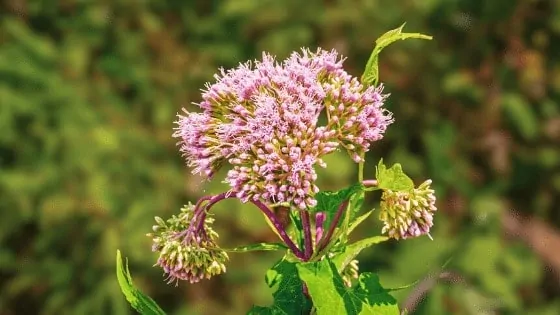
Tall Joe-Pye Weed
Rhododendrons – These lush, blooming flowers are an attractive addition to any rain garden with a plus point of being low maintenance.
They make great garden plants.
The flower varieties come in tubular, bell-shaped, and funnel forms that are often pleasantly fragrant.
To grow healthy and long-blooming rhododendrons, it is important that you start with well-amended soil.
It takes very minimal effort to care for the plant.
Adequate water, timely pruning and deadheading of the flowers will give your rain garden blossoming rhododendron varieties for springs to come.
Blue diamond, Cecile, and Hydon Dawn are the most popularly grown rhododendron varieties.
Blue Flag Iris – Elevate your garden with this stunning flower that made it into our selection of great garden plants. The blue flag iris is a tall and beautiful flower to grow in a rain garden.
This radiant selection was named after the Greek Goddess and is fairly easy to grow.
It falls under the category of clump-forming plants with bluish-green leaves.
Each stalk carries five violet-blue flowers with purple hints and a yellow and white central patch.
This charming flower prefers loamy soil for growth under full or partial sunlight.
HOW TO TAKE CARE OF GREAT GARDEN PLANTS FOR THE RAIN GARDEN?
Water the rain garden once every week for the first three-four weeks after planting.
However, if you notice one inch of rainwater accumulating in the rain garden, additional watering may not be needed.
During the drought season, make sure to follow a proper watering cycle. Weeding must also be practiced at regular intervals to prevent weed growth.
Rain garden plants also need mulching until they mature well. You must mulch around the edge of the rain garden as it will help in fighting against soil erosion.
The timely removal of dead vegetation, weeds, and seedlings will also facilitate healthy growth for rain garden plants.
3. Summer Blooming Plants
Who wouldn’t love to grow plants that blossom in the garden throughout the summer?
No list of great garden plants without summer blooming plants we say!
There is a smart combination of flowers that will keep your garden blossoming summer long, without any pampering.
You can grow an ideal summer garden with a plethora of beautiful flowering shrubs that explode to give a colorful show in the summer.
What’s better in terms of great garden plants than flowering shrubs?
Here are some summer blooming flower suggestions for you to welcome color and texture to your garden,
Hardy Hibiscus – This pretty flower in shades of white, red, and pink is a sun-loving plant.
It easily attracts hummingbirds and butterflies, lending your garden an awe-inspiring view.
Hardy Hibiscus starts to bloom late in the summer, and once it matures, large flowers are produced.
In areas with hot summers, it prefers some afternoon shade. The plant usually dies in winters but regains its vibrancy as soon as summers hit.
You must keep the soil moist and water regularly with occasional mulching.
Daylily – Daylily qualifies as a highly recommended flower and is on our list of great garden plants when it comes to summer gardens.
It requires minimal maintenance and is observed to be insect resistant.
Daylily blooms grow in a variety of colors, shapes, and sizes, lending your garden a more wholesome look during summers.
They must be planted in a location that is a recipient of direct sunlight for a minimum of 6 hours.
And the soil must be slightly acidic and moist.
Daylily flowers are borne on long stalks, attracting everyone’s attention with their vibrant colors.
Stella de Oro is popular amongst all daylily varieties.
It is recommended that you grow them in divisions.
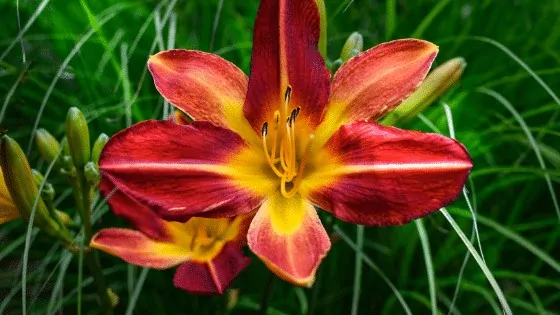
Daylily
Shasta Daisy – Brighten up your garden with the cheery Shasta Daisy flowers. These large flowers are a natural addition to any sunny garden.
The large white blooms begin appearing between early and late summers and last until early fall.
Shasta daisies prefer well-drained and not over-rich soil. Plant under the full sun but don’t forget to provide protection against wind.
You can choose from different varieties that will give you varying lengths from short to tall.
With its low maintenance characteristic, this flower is a perfect choice to make your garden bloom all summer.
HOW TO TAKE CARE OF SUMMER-BLOOMING PLANTS?
Great garden plants that bloom throughout summer need to be taken care of due to extreme weather conditions in July and August.
Drought possibilities cannot be denied, either.
Under soar temperature conditions, weeding is not a satisfying task to do.
Therefore, you must be focused on the weed control routine to prevent your summer garden from rotting away.
Repeat cultivation twice a week so that established weeds are weakened.
Disease control is another crucial aspect of care tips for plants that blossom throughout summers.
Drought conditions and high temperatures make flowers susceptible to fungal diseases and insect attacks.
And when paired with high humidity, the spread of plant diseases accelerates further.
Therefore, you must remove and destroy infected leaves from the growing plantation immediately as soon as you spot mildew attacks.
These pests are a threat to your great garden plants.
Moreover, some flowers need to be fed on nutrients regularly to help them bloom until the end of the season.
Don’t forget to fertilize them when needed.
Wise watering and strict mulching routine also contribute majorly to flower production and great garden plants.
During the summer months, flowers often need an inch of water at a minimum each week.
You must also mulch garden edges to prevent the soil from cracking and flower roots from withering.
And what is nicer to look at than some nice flowers? Flowering plants easily are great garden plants.
4. Great Foliage Plants
A well-designed garden comes with a versatile variety of foliage. Ideal for any vacant corner, these leafy plants complete the garden in the most attractive ways.
Here are some great foliage plants to help you design a garden that never fails to please the eye,
Leafy Begonias – When it comes to one of the easiest summer flowering foliage, Leafy Begonias take the lead. These begonias never fail to display a pleasing floral display all summer, making them a perfect houseplant. They prefer slightly damp soil conditions with full sun and high humidity to grow.
Purple Fountain Grass – Purple Fountain Grass is also easy to grow. It is a very popular drought-tolerant grass.
The formation of dense purple clumps with maroon blades gives it an edge over other types of foliage plants.
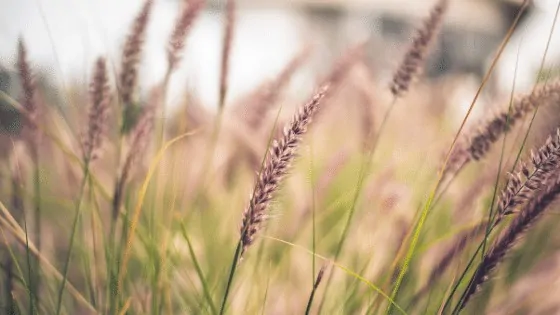
Purple Fountain Grass
It gives a beautiful outlook to the garden with its rose-red plumes.
Since it is drought tolerant, you must water sufficiently every week or two. The use of slow-release fertilizers once in a while is also recommended.
Coleus – If you talk about foliage, Coleus is the gardener’s favorite as they male great garden plants.
It comes in a broad range of varieties to choose from. Many of these varieties grow well in both shade and sun.
But to achieve the best color, you must have a combination of full sun exposure and shaded hours.
Strictly, avoid excessively damp soils as they lead to leaf drop and make the foliage prone to diseases.
And if you wish to maintain plant form and have not good but great garden plants, then pinch back every few weeks as it will help prevent flower formation on the foliage.
HOW TO TAKE CARE OF FOLIAGE PLANTS?
Once you get started with foliage, you are sure to find yourself growing more each year to give your garden a healthy look.
Foliage plants play an essential part in a list of great garden plants.
Here are some of our best care tips to guide you through great foliage gardening,
Water frequently for lush green foliage and great garden plants. You must never allow the soil to get completely dry as this causes the leafy foliage to wither.
Foliage plants can be grown conveniently in a variety of soil mixes, but for easy care and fast growth, soils with high portions of peat moss are preferred.
You can try out the following soil combinations for growing foliage,
- One part coarse sand, one part perlite, two parts peat.
- One part coarse sand, Two parts peat.
If you give too little light to the foliage, then the leaves grown will be too little.
And if you see greenish-yellow foliage growing, then it indicates that you exposed it to too much light and did not fertilize the soil well.
Brown leaf tips also signal trouble and do not make for great garden plants. It is mostly because of excess fertilization and dried-out soil.
5. Butterfly Blooming Plants
Butterflies in the garden are a sight we all love to enjoy. And acknowledging this undying relationship of flowers and butterflies, we have compiled a list of butterfly blooming plants for you to grow,
Butterfly Bush – With its long panicle of colorful flowers, the Butterfly Bush is known to be a generous host to butterflies.
It blooms in spring and summer, but the natural shrubs and evergreen foliage lend it a fresh blossoming vibe even when it does not bloom.
To plant Butterfly Bush, choose a sunny and partially shaded area. The soil must be well-drained and water the shrub carefully.
Cannas – Cannas are tropical bulbs and are great garden plants with beautifully refined buds.
Canna plants tend to love water and heat.
Plant them outdoors in late spring or early summer to get gorgeous paddle-shaped leaves and large radiant bulbs that stand tall.
But before you plant Cannas, the soil must be loosened to a depth of 13 inches and mixed with 3 inches of compost.
Phlox – A butterfly garden stands incomplete without this pretty, sweet-smelling flower. Phlox blossoms in pink, lavender, and salmon red shades all summer long.
Plant the disease-resistant varieties to prevent fungal diseases like powdery mildew.
The cloudy blooms in vibrant colors, have crowned it with popularity amongst butterfly-loving plants. The long flower season is another plus.
For better results, grow in fertile, moist soil that is well-drained and enriched with organic matter. And sunlight exposure must range from 5-6 hours daily.
HOW TO TAKE CARE OF BUTTERFLY-LOVING PLANTS?
Butterflies in the garden are like extra chocolate frosting on the cake, sweet and mesmerizing.
So, to enjoy floating butterflies in your garden, you have to prioritize plant care.
We are going to list great garden plants that attract butterflies.
Butterflies pay a visit to a group or clump of flowers rather than a single plant, so make sure you grow clump-forming plants to host butterflies.
All butterfly-loving plants are also sun-loving plants as butterflies prefer warm regions. A sunny site must be your pick when growing these plants.
Water the plants freely when they are in the growth period.
And refrain from fertilizing butterfly-loving plants excessively as this will promote leaf production and halts flower production.
Lastly, be sure to look out for fungal spots on leaves and other forms of pest attacks.
FREQUENTLY ASKED QUESTIONS ABOUT GREAT GARDEN PLANTS
Can butterfly-loving plants be relocated?
Most butterfly-loving plants can be relocated, but Butterfly Bush can be transplanted very easily. The ideal time to transplant perennial plants is during fall and early spring. The reason is that during these months, the plants are neither producing new growth nor flowering.
How to take care of peony?
Beautiful Peonies are a delicate addition to any garden and a great choice as they make great garden plants. To help these blush pink beauties flourish, you must ensure regular pruning of dead branches. Avoid applying generous layers of mulch when growing peonies in well-drained moist soil. Herbaceous peonies die in winters; therefore, it is better to clear away the dead plantation to prevent pests and diseases from harboring.
Can we plant Rhododendrons if we have Clay Soil?
Clay soil may get difficult to deal with when growing rhododendrons. Dig a big hole fill it with water and see how quickly it drains. In the case of heavy clay, the water may drain very quickly, indicating poor drainage. But if you make use of large amounts of peat moss, pea straws, leaf matter, and mulch, then the soil conditions will favor the growth of rhododendrons conveniently.
What causes my foliage leaves to turn yellow?
If you notice only a few old leaves turning yellow, then this is not something you should worry about. But if a big part of your foliage is turning pale, then this either means excessive sunlight exposure or too much or too little water. In that case, you might have to try altering the watering routine and get the foliage in some shaded area. Lastly, you must look closely for any sap-sucking pests like mites and aphids around the leaves. And for additional care, please note that fungal diseases like root rot, often caused by overwatering, contribute majorly towards yellow leaves.
Whether you want to get started with garden design from scratch or improve upon the existing one, you must first consider the planting requirements of the great garden plants.
And then decide which one to plant accordingly. Start with a well-detailed plan to help you guide through the dos and don’ts of great gardening plants.
And you’ll surely treat your eyes to a garden that blooms with radiant colors, fresh foliage, chirping hummingbirds, and floating butterflies.

Daniel has been a plant enthusiast for over 20 years. He owns hundreds of houseplants and prepares for the chili growing seasons yearly with great anticipation. His favorite plants are plant species in the Araceae family, such as Monstera, Philodendron, and Anthurium. He also loves gardening and is growing hot peppers, tomatoes, and many more vegetables.

